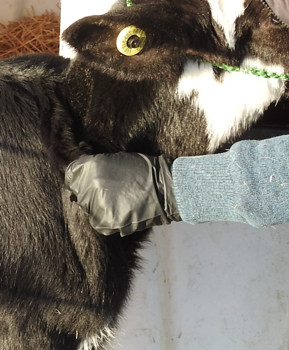Section 2 | Tackling Diarrhea in Young Calves
Page 08 /
Identifying Diarrhea in Young Calves
Preweaning disease is a major concern for cow-calf operations, as it results in significant economic losses due to death rates and reduced weight gains. A recent study conducted in Canada identified that diarrhea is responsible for most treatments occurring in the preweaning period, with 5% of calves receiving treatment for diarrhea12. Of those receiving treatment for diarrhea, it is estimated that 61% and 57% of calves received oral or injectable antimicrobials, respectively13. As many calves with diarrhea do not require antimicrobials, it is important to revisit this topic to refine treatment protocols for calves with diarrhea.

Clinical Signs of Diarrhea
Finding calves early in the course of diarrhea and applying the appropriate intervention is imperative to minimizing the consequences associated with it. It is important to evaluate each calf in the same way to make sure that the correct diagnosis is achieved. As most calf diarrhea occurs early, the focus should be in the first month of life.
There are several factors to consider when evaluating calves for diarrhea:
Fecal score
-
- An abnormal fecal score will be the first indicator of diarrhea
- A calf with manure that has a watery consistency that does not retain form is considered to indicate diarrhea
Attitude
-
- The attitude of the calf will tell you how much fluid loss has occurred
- A bright and alert calf will have minimal dehydration, whereas a calf that appears depressed may be moderately to severely dehydrated

Source: ACER Consulting Ltd.
Dehydration level
-
- In addition to attitude, other signs of dehydration include the level of eye recession, as well as the length of time it takes for a skin tent to return to normal
- For the severity of the level of dehydration level, consult Table 1
| Level of Dehydration | Attitude | Skin Tent (sec) | Sunken Eyes | Treatment |
| <5% | Normal, bright, alert | <1 | None | None |
| 6-8% (Mild) | Slightly depressed | 1-2 | Slight | Oral Electrolytes |
| 8-10% (Moderate) | Depressed | 2-5 | Obvious | IV Fluids |
| >10% (Severe) | Comatose | 5-10 | Very Sunken | IV Fluids |
Rectal temperature
-
- A high rectal temperature is anything >39.5 °C or 103.1 °F. This tells us that a systemic infection is taking place
Adding these 4 signs together will help determine the right course of treatment. The right treatment will:
-
Maximize success
-
Minimize the impact of diarrhea on your calves
-
Require antimicrobials only in the most appropriate situations
References
- Murray, C. F., T.F. Duffield, D.B. Haley, D.L. Pearl, D.M. Veira, S.M. Deelen, and K.E. Leslie. 2016. The Effect of Meloxicam NSAID Therapy on the Change in Vigor, Suckling Reflex, Blood Gas Measures, Milk Intake and Other Variables in Newborn Dairy Calves. Journal of Veterinary Science and Animal Husbandry.
- National Animal Health Monitoring Services (NAHMS). 2007. NAHMS Dairy 2007 Publications. Available at: https://www.aphis.usda.gov/animal_health/nahms/dairy/downloads/dairy07/Dairy07_allpubs.pdf